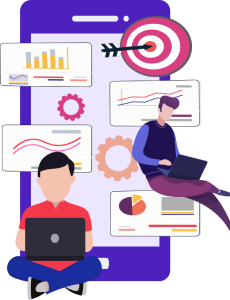



Rapid Application Development is a modern, innovative strategy of software development characterized by speed, flexibility, and real users' contribution. Unlike traditional approaches, RAD provides emphasis on iterative prototyping and fast adaptation in view of the users' needs. This report is dedicated to exploring what RAD is, its benefits, and the stages involved in using it.
RAD stands out from traditional development methodologies by focusing on user involvement and continuous feedback. This approach allows developers to make real-time adjustments, ensuring the final product aligns closely with user expectations. Let's dive deeper into the core aspects of RAD to understand why it is so widely adopted.
Rapid Application Development is a software methodology focused on delivering functional prototypes quickly. By prioritizing iterative cycles over exhaustive planning, RAD ensures flexibility in adapting to evolving user requirements.
RAD addresses challenges in traditional models, such as rigidity and delayed feedback. Its adaptability ensures quicker time-to-market and higher user satisfaction, making it a preferred choice for businesses aiming to innovate rapidly.
The RAD process is divided into four distinct phases, each focusing on collaboration, prototyping, and iterative improvements. These phases ensure a streamlined approach to development while maintaining flexibility throughout the process.
This phase focuses on defining high-level objectives rather than detailed specifications. Developers and stakeholders collaborate to establish a broad understanding of the project's goals and desired outcomes.
Developers create working prototypes to demonstrate key features and functionalities. Feedback from stakeholders is used to refine these prototypes iteratively.
The construction phase transforms prototypes into fully functional applications. Continuous testing and user feedback ensure alignment with expectations and address potential issues early.
The final phase involves deploying the application in a live environment. Teams conduct thorough testing, debug the system, and prepare technical documentation to ensure a seamless launch.
RAD offers a range of advantages that make it a preferred methodology for businesses seeking agile and efficient software solutions. Its emphasis on flexibility and collaboration provides unique benefits.
By delivering functional prototypes quickly, RAD allows businesses to launch products faster, gaining a competitive edge in dynamic markets.
Continuous feedback minimizes errors early, reducing debugging costs. The quicker deployment also enables faster revenue generation.
User involvement throughout the development process ensures the final product meets their expectations, driving higher adoption rates and loyalty.
RAD's iterative approach minimizes risks by breaking down projects into manageable cycles, ensuring any issues are resolved promptly.
RAD is not a one-size-fits-all solution. Its success depends on the specific needs and conditions of a project. Here's when RAD is most effective:
When projects require rapid turnaround times, have flexible requirements, or rely heavily on user feedback. RAD's adaptive nature makes it suitable for projects demanding quick results without compromising quality.
RAD excels in situations where time is a critical factor. Its iterative approach allows for rapid delivery of functional solutions.
For projects with evolving goals, RAD's adaptability ensures that changes can be incorporated seamlessly.
Consistent and reliable user feedback is vital to refining prototypes and improving the final product.
RAD depends upon the use of specialized tools that help to speed up the development process by allowing rapid prototyping. This enhances efficiency and reduces dependence on heavy coding.
Kissflow and other such platforms allow users to create applications using drag-and-drop methods, making RAD even possible for non-technical teams.
Tools like Figma and Sketch make prototyping easy, which developers can use to try out many versions in quick succession with user feedback.
Rapid Application Development is a revolutionary methodology concerning speed, collaboration, and user satisfaction. This iterative approach will enable any business to keep up with the evolution of its needs toward achieving quality solutions. Be it for internal tool development or customer-facing applications. RAD extends a flexible framework toward the successful meeting of objectives. With the right set of tools in combination with users during every stage, RAD can help in developing impactful applications that come across as close to the desired vision.